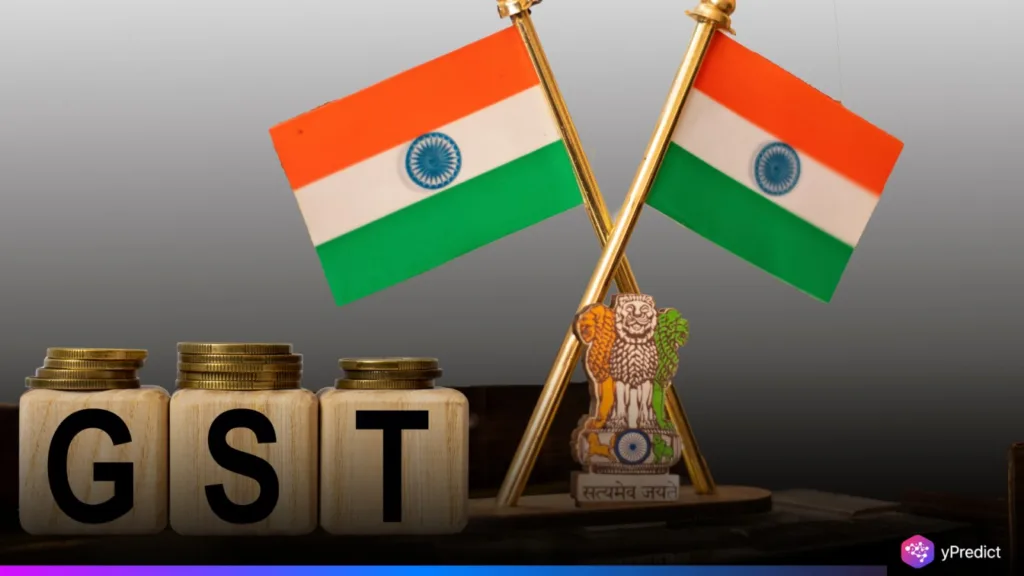
The 8th anniversary of the Goods and Services Tax (GST) in India was celebrated by Prime Minister Narendra Modi with a post on X on July 1, 2025. While describing the Modi GST as a landmark reform that changed the fabric of the Indian economy though, simplification of indirect taxes, improvement in compliance of SMEs, and growth in the Ease of doing business; the government emphasized growth and economic unification while the public in online sentiment related to the unresolved issues like closures of enterprises, high rate of taxes, and the complexities associated with compliance.
A Reform to Simplify, Says Modi
In his post, Modi asserted that GST had been able to help in alleviating compliance burdens for small and medium enterprises, promote federal collaborative processes, and increase transparency in the tax process. Modi cast the Modi GST as a growth engine for the Indian economy and a unifying vehicle for the country’s disaggregated tax structure. Two additional images – a ceremonial launch and a parliamentary assembly – lent a formal quality to the post and connected the reform to national significance.
Modi also alluded to the unification of India’s internal market by saying that GST had made all states equal partners in the rise in economic progress. The post positioned Modi to carry forward a narrative of confidence in transformation, modernization of tax, and reducing the burden for businesses.
Public Sentiment Splits on Impact
Despite the celebratory tone, reactions on X painted a mixed picture. Some users supported the Modi GST initiative, saying it brought businesses into the formal economy and ensured better bookkeeping. @rahulpassi praised the shift from grey to white market activities, while @rranjaninc noted the transparency it enabled.
However, others voiced frustration over increased burdens. @IndicPriestKing criticized the GST’s five-slab structure and called it a disaster for small businesses. He pointed to over 18 lakh enterprise closures since the introduction as a red flag. Another user, @fanta, called it a “headache,” claiming that while it brought clarity, it lacked tangible benefits for citizens. Satirical comments branded the tax as “Gabbar Singh Tax,” a term that continues to trend as a symbol of discontent.
Compliance Still a Major Hurdle
While Modi’s post stressed benefits to SMEs, many entrepreneurs argue that SME compliance under GST remains cumbersome. Frequent rule changes, varying tax slabs, and tight filing schedules have complicated day-to-day operations. New rules introduced on July 1, 2025, limit the time frame for filing past returns to three years — a move that may tighten accountability but adds further pressure on small businesses.
Even with improvements in digital methods of filing, compliance was adding to the overall cost of operations. Detractors contend that it has not been simplified, as GST would imply, for micro and small entities without access to sound accounting systems.
Strong Collections, Lingering Complaints
Recent GST collection figures back the government’s narrative of economic resilience. June 2025 collections reached ₹1.85 lakh crore, up 6.2% from the previous year. However, this was a dip from April and May peaks. Overall, FY 2024-25 saw a 9.4% rise in collections, reflecting stronger consumption and business activity.
Still, public dissatisfaction continues to grow. Pending refunds — reportedly over ₹20,000 crore — and high tax slabs remain unresolved pain points. For exporters and service providers, delayed reimbursements and frequent notices have added uncertainty. Users on X repeatedly cited these delays as obstacles to profitability, especially for SMEs.
GST at a Crossroads
With the GST Council’s 56th meeting around the corner, and rising expectations for simplicity and adherence to process, the scope of the Modi GST reform stands at a turning point. While GST has done well in terms of driving the formalisation of the economy and replacing/ consolidating previous federal and state tax systems/regimes, the voices are growing louder concerning enterprise failures and the compliance burden placed on the SME segment.
The Government must act; the challenge is being more actively perceived about what GST means, which will lead to continuing to posit its benefits while being responsive to the burdens that society perceives. This is now a ninth-year discussion; no longer about reform; this is now about being responsive, about resolution, about impact.







